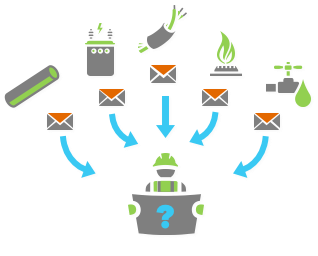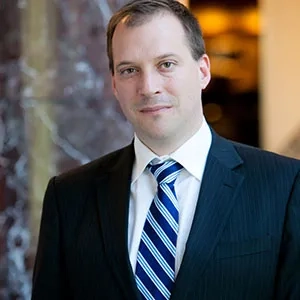Last year, Esri Australia consulted representatives of utilities, local government, civil contractors and the one call referral service in South Australia and Northern Territory to come up with a vision for the future of underground asset damage prevention.
The aim was to develop a solution that builds on spatial data discovery and sharing whilst maintaining the integrity of an enquiry-first service capable of fulfilling the needs of those looking to share spatial data to a wider audience.
This blog series will focus on the challenges of the existing system and outline the steps we took to address them and create a Next-Gen pilot.
One Call for Underground Asset Protection
One call services are provided internationally as a tool for an excavator to make a single enquiry and have it forwarded to all relevant asset owners.
In Australia, the first step before doing any excavation is to make a Dial Before You Dig enquiry through 1100.com.au.
If you’re not aware of Dial Before You Dig (DBYD), it’s a not-for-profit organisation that helps prevent damage and disruption to Australia’s vast infrastructure networks including essential services such as electricity, gas, water and telecommunications.
A recent study commissioned by the Association of Australian Dial Before You Dig Services (AADBYDS) estimated that there are 740,000 kilometres of underground assets worth more than $340 billion nationwide.
At the 2018 Oceania Damage Prevention Conference held on the Gold Coast, Stuart Burdack (CEO, AADBYDS) said DBYD exists to achieve “Zero harm, zero damage” in relation to underground assets.
Today, DBYD provides the 1100 referral service for those planning on digging up a road — or even their own garden — to lodge an enquiry which is forwarded to each of the underground asset owners in the dig vicinity. Asset owners then send back maps with the indicative location of any infrastructure near the planned excavation.
Similar referral services are used in other countries such as 811 in the US or Click Before You Dig in Canada. Elsewhere in the world — such as in the UK and Singapore — referral services are more fragmented requiring the excavator to research who the possible asset owners are in an area to request plans.
Today’s referral service
Dial Before You Dig in Australia is very successful in terms of the number of registered asset owners and the community’s high level of awareness of the need to enquire before proceeding with any excavations.
Having said that, there are still several obstacles and challenges for those making the enquiries as well as the asset owners who need to respond.
When we mapped out the user journey for the enquirer the most striking challenge was the resulting influx of emails from submitting a request.
A single enquiry could involve up to 16 or more asset owners and keeping track of email responses from each of them and accounting for every asset in the area turned out to be a complicated process.
In a number of cases, the excavators had not considered every asset owner’s information before digging.

The enquirer also struggles to read the asset plans and orient themselves spatially with the maps they are looking at.
In one example, the contractor was looking at maps that were for the carriageway on the opposite side of their planned excavation site.
This challenge stems from each asset owner sending back their infrastructure plans in various formats, maps and symbology.
For the asset owner, becoming a member of a one call service creates a requirement to put processes in place to respond to dig enquiries that affect their infrastructures.
However, the costs of generating and sending these maps back can be far higher than the membership fees, and with double digit growth in Australian enquiry volumes each year, this growth flows straight through to the asset owner in terms of the demand for producing ever more plans.
As it stands, the current service’s decentralised referral model places the responsibility of improving technical solutions on individual members rather than on the Dial Before You Dig organisation. Not to mention, the closed application architecture actively prevents third-parties from innovating the service.
For the pilot program Esri Australia was asked to look at how innovation could improve this technical solution and deliver a Next Generation service.
The Next-Generation One Call Pilot
Our aim was to move from the current enquiry-forwarding referral model to a complete enquiry-response solution that supports secure, consistent discovery and sharing of underground asset data.
Lodging an enquiry remains central to the protection of underground infrastructure, as it allows asset owners to accurately communicate locations and safe work methods. However, this doesn’t mean that the responsibility of the one call service should end with capturing and forwarding enquiries to the relevant utilities.
The principles that underpinned the Next-Gen Pilot were:
-
Deliver world’s best practice for asset and life protection;
-
Facilitate future expansion in the range of services offered;
-
Ensure the asset owner remains in control of their data and representation.
One of the requirements of the solution was to reduce the impost on asset owners through a shared centralised response-automation system and improve the enquirer’s experience to strengthen understanding of the risks and safety practices when performing works.
The solution was developed as a platform allowing multiple participation methods including uploading data, connecting to web services, integrating with custom APIs or even sketching asset data on a web map for the smallest members.
An open API allows for new third-party services to be developed on top of the platform while ensuring members remain in complete control of their data.
In the next part of this blog, I will reveal the challenges we came across and the approach we took to solving them.
Explore more of Gary's blogs here.
To find out more about SmarterWX, visit the product page, call us on 1800 870 750 or send us an email.
Note: The views and opinions expressed in this article are those of the authors and do not necessarily reflect those of DBYD SA/NT or AADBYDS.

